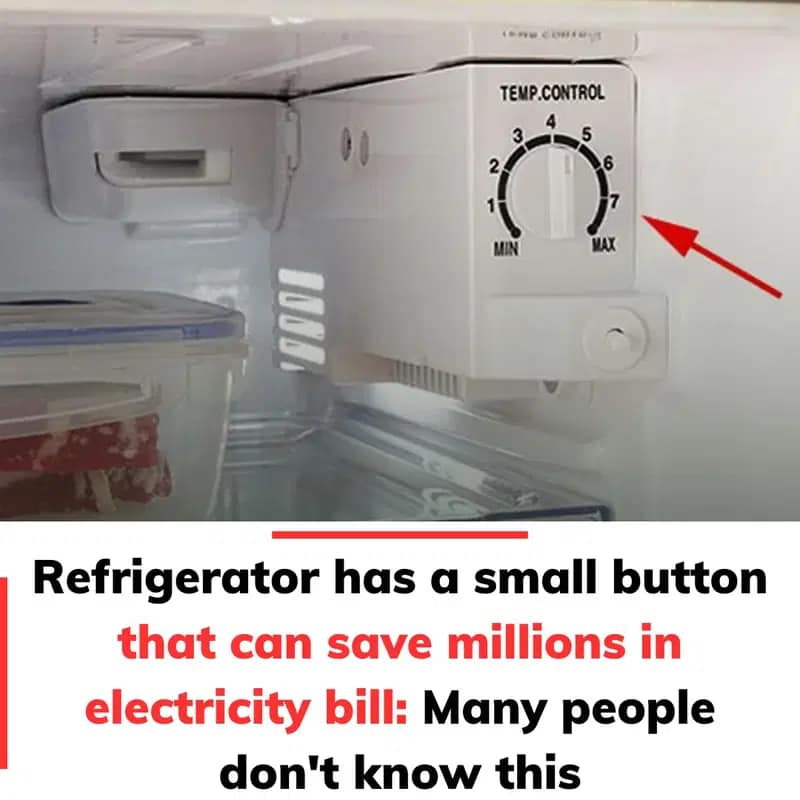Many people may not realize how much a refrigerator’s placement and usage habits affect its efficiency, energy consumption, and overall lifespan. Refrigerators are carefully designed to release heat, typically from their two sides or the back, depending on the model. This heat dissipation process is essential for maintaining optimal performance and preventing the appliance from overworking. However, when the refrigerator is placed too close to walls, cabinets, or other obstructions, the heat cannot escape efficiently. As a result, the appliance must work harder to maintain the desired internal temperature, which increases energy consumption and puts unnecessary strain on the compressor. Over time, this can lead to higher electricity bills, reduced efficiency, and even premature breakdown of the refrigerator.

To avoid these problems, it’s crucial to leave adequate space around the refrigerator. Experts recommend maintaining at least a few inches of clearance between the refrigerator and surrounding walls or furniture. This small adjustment ensures proper airflow and allows heat to dissipate effectively, preventing the appliance from overheating. Regularly inspecting and cleaning the ventilation areas can also make a significant difference in maintaining optimal performance.
Another common mistake is placing the refrigerator near heat-generating appliances such as ovens, electric stoves, or microwaves. These appliances release significant heat during operation, which can raise the ambient temperature around the refrigerator. When exposed to excessive heat, the refrigerator must work harder to cool its interior, which not only consumes more energy but also accelerates wear and tear on critical components. For this reason, it’s best to position your refrigerator in a cool, well-ventilated area, away from direct heat sources and sunlight.
Proper usage habits are just as important as proper placement. One of the most common energy-wasting mistakes people make is leaving the refrigerator door open for extended periods. Whether you’re browsing for a snack, searching for ingredients, or just distracted, every extra moment the door stays open allows cold air to escape and warm air to enter. This temperature fluctuation forces the compressor to work harder to restore the internal temperature, which consumes more energy and reduces the appliance’s efficiency.
To minimize energy waste, it’s a good idea to know exactly what you need before opening the refrigerator door. Take out everything you need in one go and close the door firmly. Additionally, regularly inspect the refrigerator door seals to ensure they’re in good condition. Worn-out or damaged seals can allow cold air to leak out even when the door is closed, leading to unnecessary energy consumption.
The internal organization of the refrigerator also plays a significant role in its efficiency. Overloading the shelves can obstruct airflow, making it difficult for cool air to circulate evenly. This can result in uneven cooling, causing some areas of the refrigerator to be too cold while others remain too warm. On the other hand, an almost-empty refrigerator isn’t efficient either, as it requires more energy to cool empty spaces. The ideal scenario is to keep the refrigerator moderately stocked, which helps maintain consistent temperatures and promotes proper air circulation.
Regular maintenance is another essential factor in keeping your refrigerator running smoothly. Over time, dust and dirt can accumulate on the condenser coils, typically located at the back or bottom of the appliance. Dirty coils make it harder for the refrigerator to release heat, forcing the compressor to work harder and use more energy. Cleaning the coils regularly with a soft brush or vacuum can greatly improve the appliance’s efficiency and extend its lifespan.
Temperature settings also play a vital role in energy efficiency. The recommended temperature for a refrigerator is between 37°F and 40°F (3°C and 4°C), while the freezer should be set at 0°F (-18°C). Setting the temperature too low will waste energy, while setting it too high may risk food spoilage. Many modern refrigerators also come equipped with energy-saving modes, such as eco-mode or vacation mode, which can help reduce power consumption when the appliance isn’t heavily used.
In conclusion, the efficiency, performance, and lifespan of your refrigerator depend on a combination of proper placement, mindful usage habits, and regular maintenance. Ensuring there’s adequate ventilation, keeping the appliance away from heat sources, minimizing door-opening time, and organizing the interior effectively are all crucial steps to maximize energy efficiency and reduce wear and tear. By following these practices, you can save on electricity bills, reduce environmental impact, and extend the life of your refrigerator. The next time you open your refrigerator door or consider its placement, remember that these small adjustments can lead to significant long-term benefits.





